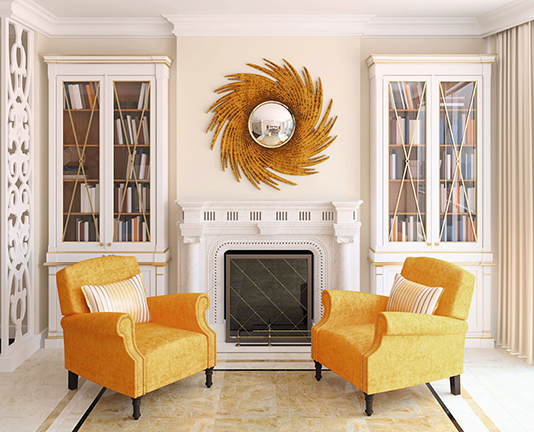Most homes for sale are furnished and even if you walk through a few times before putting in your offer, you may not think of asking the sellers or the estate agent which items are fixtures and which ones are fittings and furnishings.
The problem is that some items that sellers intend to remove may look like fixtures to potential buyers, seeing the property during a viewing. For example, a crystal chandelier in the hallway could be a treasured antique that the sellers intend to replace with an alternative when they move out. Buyers would naturally assume it comes with the property unless informed otherwise.
This could result in a dispute if the position isn’t clarified from the start of negotiations.
Definition
A fixture is defined as any item that is permanently attached – fixed – to a property. Examples could include built-in cupboards, wall or ceiling-mounted lights, and fireplaces. Although there is no legal definition of what constitutes a fitting, fittings are generally considered to be items that are freestanding or can easily be removed. These are items such as heaters, television stands, and freestanding bookshelves.
A typical example of what might be considered a fixture in a home and part of the living room is a custom-built wall unit. However, on closer inspection, it might be noted that the wall unit is freestanding and designed to be moved.
The sellers may see it as an item of furniture rather than part of the property. They don’t intend to leave it in the home when they vacate it, but it doesn’t occur to them to inform the agent or buyer.
Other items that buyers could assume are part of the property are:
- Burglar alarms
- Solar panels
- Air-conditioning units
- Wendy houses
- Shelving
- Swimming pool equipment
- Safes
Avoid disputes
Ideally, a property should not be marketed with items that the sellers will remove when they move out. However, if sellers do plan to remove any items that appear to be part of the permanent structure, they need to specify this in the purchase agreement. They should agree to replace them with suitable alternatives or drop their asking price accordingly.
As for buyers, it’s important to inspect each room in the home and make a list of any removable items. This list should be included in the offer to purchase, with items marked as ‘included’ or ‘excluded’.
In this way, misunderstandings between buyers and sellers will be avoided.
Source: privateproperty.co.za






